Estimated reading time: 9 minutes
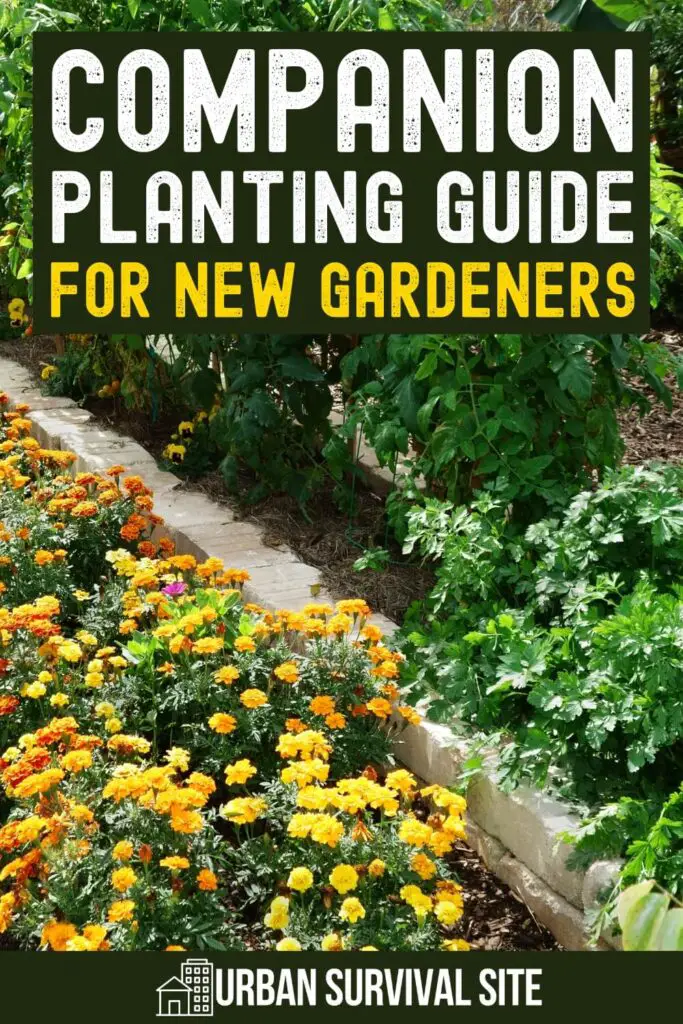
Companion planting takes advantage of the symbiotic relationship that some plants have with each other when planted in close proximity. Symbiotic means the plants help each other in unique ways.
This symbiosis could be the way plants help each other, protect each other, or provide other benefits like attracting pollinators or repelling insects or pests like mice and rabbits. It’s all about taking the time to think about how plants can be planted strategically for mutual benefit.
The 3 Sisters Example
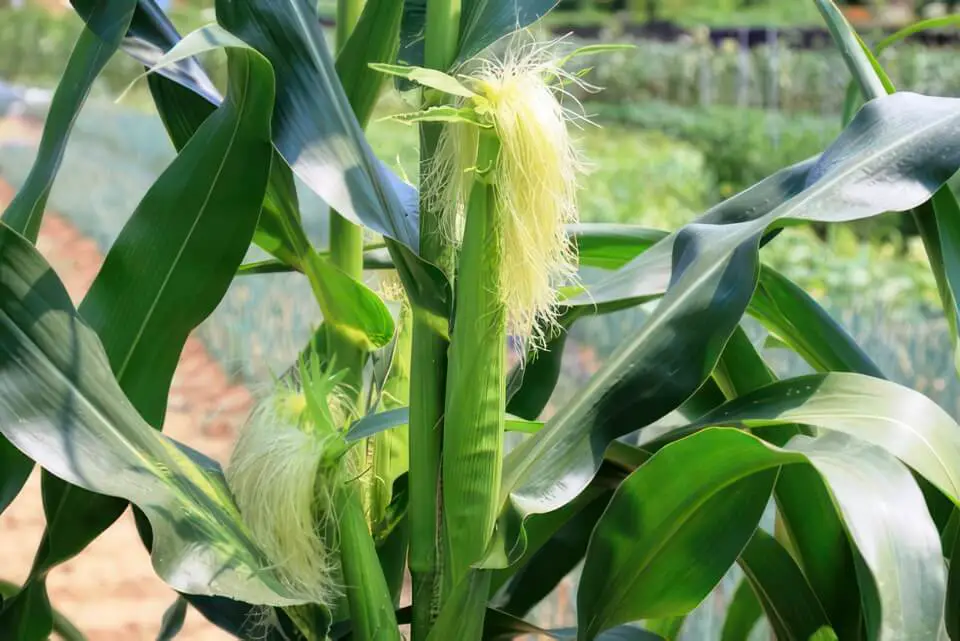
An ancient companion planting idea is defined as the three sisters. It involves planting corn, pole beans, and squash in a cluster.
The idea is that as the corn grows tall, the pole beans use the corn stalks to grow up and around the stalks. The beans return nitrogen to the soil feeding the corn. Corn is a heavy feeder and draws many nutrients from the soil, but the beans compensate as they grow up the corn stalks and return nitrogen to the soil.
The squash planted below have wide leaves that shield the soil from the sun to keep it moist. All three plants, when grown together in close proximity, provide unique benefits as companions. That’s the fundamental benefit of companion planting, but as we go on we’ll find more.
The Companion Planting Heroes
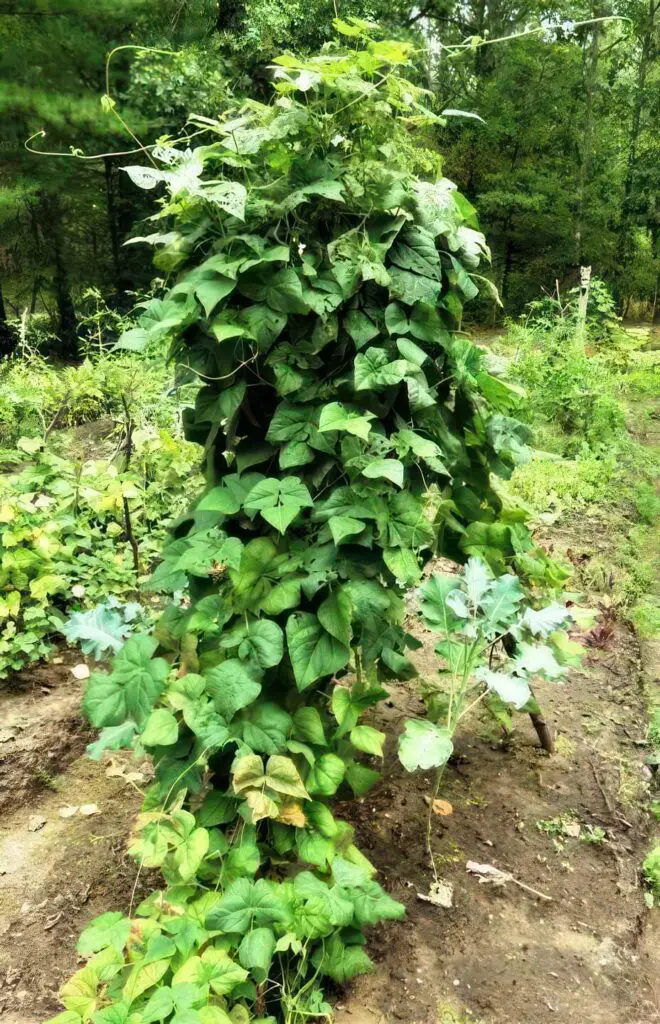
Beans and peas are the heroes when it comes to companion planting. Bush beans, pole beans, and all varieties of peas return nitrogen to the soil, and that’s the critical plant food for all plants.
Beans and peas have a unique way of using something called “nitrogen fixing bacteria” to manufacture excess nitrogen and return it to the soil. If you only companion plant one kind of plant, make it beans and peas.
The plants that tend to be the worst companions fall in the allium family. These include onions, shallots, and garlic. Think twice about where you plant these garden staples. They do a good job of repelling rodents and garden pests, but make bad companions for many flowers and vegetables. They not only inhibit their growth but also repel pollinators that some vegetables need to bear fruit.
Here’s a chart that identifies good companions and some that don’t get along so well. The more you create a good neighborhood for your plants, the more likely you’ll find success in your garden.
| VEGETABLE OR FRUIT | BEST COMPANIONS | WORST COMPANIONS | BENEFIT OF PLANTING |
|---|---|---|---|
| Asparagus | Tomatoes, basil, strawberries, peas, carrots, cucumbers | Onions, garlic, leeks, potatoes, all beans, | Not a good companion for many plants |
| Beans (Pole and Bush Beans) | Brassicas, carrots, celery, chard, corn, cucumber, eggplant, peas, potatoes, radish, and strawberries | Chives, garlic, leeks, and onions | Nitrogen fixing bacteria in the roots return nitrogen to the soil |
| Beets | Carrots, onions, garlic, lettuce | Pole beans, mustard greens, | Carrots and beets are a classic combination |
| Broccoli | Celery, potatoes, onions, most herbs | Tomatoes, eggplant, lima beans, pole beans, peppers, snap beans, squash, strawberries | Best if planted in a corner of the garden |
| Cabbage | Onions, carrots, lettuce, beets, celery, mint, beans, | Tomatoes, radish, spinach, cauliflower, broccoli, grapes, squash, strawberries | Plant along edges and shade tolerant |
| Carrots | Lettuce, leeks, beans and peas, cilantro, chives, onions, radishes | Celery, parsnips, fennel, potatoes, dill | Typically get along with most common vegetables |
| Cauliflower | Beans, celery, onions, beets, broccoli, brussels sprouts, char4d, spinach, cucumber, corn, radish | Peas, strawberries, tomatoes | Avoid companion planting beans if also companion planting onions next to cauliflower |
| Corn | Beans, peas, cucumber, squash, melon, lettuce, tomato and dill | Tomatoes, fennel, asparagus | Heavy feeder and should be rotated with beans or peas season to season |
| Eggplant | All beans and peas, spinach, tomatoes, peppers | Zucchini, corn, fennel, | Fennel often shows up as a poor companion to most plants |
| Fennel | Nothing | Everything | Grow fennel in isolation. It does not get along well with others -ever. |
| Herbs in general | Asparagus, tomatoes, | Most root vegetables | Herbs are best if simply grown in a dedicated herb garden |
| Peas | Beans, carrots, celery, corn, cucumber, eggplant, parsley, peppers. potatoes, radish, spinach, strawberries and turnips | Onions | Nitrogen fixing bacteria in the roots return nitrogen to the soil |
| Peppers | Tomatoes, carrots, basil, chives, fava beans, garlic, spinach, most herbs, all onions | Broccoli, cauliflower, cabbage, fennel, corn, potatoes, eggplant, strawberries | A member of the Nightshade family and prefers other Nightshades like tomatoes |
| Potatoes | Beans, cabbage, Brussels sprouts, cauliflower, horseradish, lettuce, peas, spinach, radish | Carrot, cucumber, eggplant, fennel, okra, onion, pepper, pumpkin, raspberry, squash, tomatoes, turnips | Potatoes are heavy feeders and one of the worst companions for many vegetables and fruits. Best grown in isolation. |
| Pumpkin | Beans, peas, corn, radish, lovage, | Fennel, sweet potatoes, white, red and yellow potatoes | Also provides shade for the ground |
| Radish | Lettuces, tomatoes, carrots, onions, peppers, peas, cucumbers and spinach as well as herbs like dill, mint and oregano | Broccoli, cauliflower, cabbage, potatoes, turnips | Avoid cruciferous vegetables like broccoli, cauliflower and cabbage around radishes |
| Squash | Peas, beans, radishes, chives, borage, chamomile, sunflower, savory, | Potatoes | Provides shade to hold in ground moisture |
| Strawberries | Lettuce, chives, leeks, onions, garlic, spinach, asparagus | Tomatoes, eggplant, potatoes, pepper, melons, squash, cucumber, okra, kale, cauliflower, brussels sprouts | Strawberries often show up as a poor companion for many vegetables |
| Tomatoes | Asparagus, carrot, celery, garlic, onions, chives, lettuce, lovage, radishes, and most herbs | Broccoli, cabbage, cauliflower, corn, fennel, potatoes | Tomatoes are also heavy feeders and should be planted with special attention to companions |
| Turnip | Broccoli, cauliflower, brussels sprouts, garlic, peas and beans, most herbs | Potatoes, onions | Fairly tolerant of most plants |
But of Course, There’s More
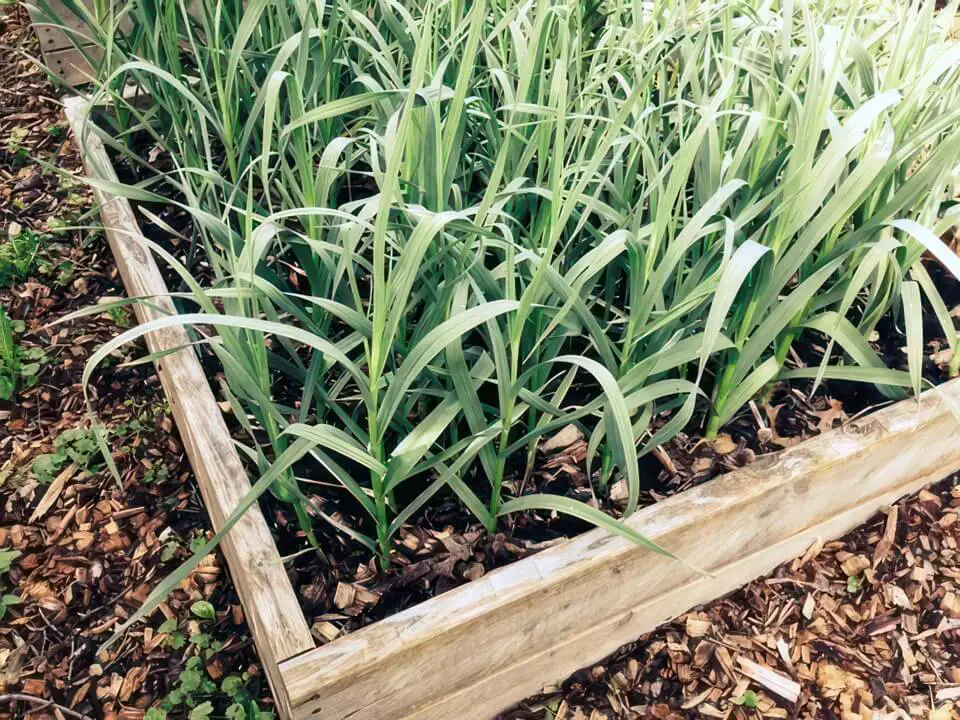
Some plants repel insects and rodents. Others attract pollinators. Companion planting goes beyond adding nitrogen to soil or protecting soil from the sun’s heat. Here are some flowers and plants to repel pests and attract those bees and other insects to keep everything growing.
The Good Guy Insects (Pollinators)
If you can attract pollinating insects to your garden, you’ll give those low-lying squash blossoms a better chance of getting pollinated. In an environment where bees are dying everywhere, we sometimes need to depend on other pollinators like wasps, yellow jackets, and even butterflies to get a crop.
Then again, honeybees still show up and will show up even more if you give them a reason to visit. Here are some facts to ponder when it comes to pollination:
- All species of bees pollinate 80 percent of all flowering plants on the planet. If you don’t have a local beehive, think about growing flowering plants.
- A single bee colony can pollinate some 300 million flowers and vegetables a day.
- Bees pollinate 70 of the top human food crops.
- One out of every three bites of food we eat is derived from plants pollinated by bees and other pollinating insects.
- Avocados, apples, pears, peaches and cherries are 90% dependent upon bee or insect pollination.
- Cucumbers, squash, apples, peppers, tomatoes and berries are other food crops that rely on flying insect pollination.
The Good Guy Plants
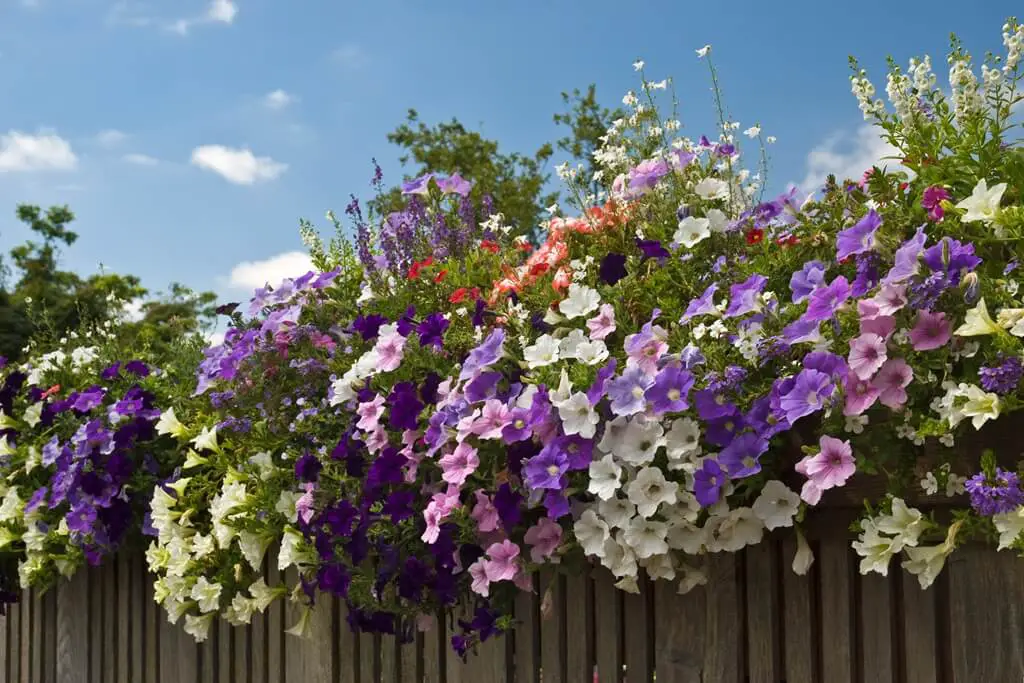
Some plants repel rodents and bad bugs. They look nice in any garden and keep the bad guys away. Here are the heroes that you can plant In or around any garden that can both serve and protect from rodents, bugs, and other pests while attracting pollinators:
- Black-eyed Susan
- Butterfly weed
- Caledula
- Elder
- English lavender
- Geraniums
- Giant hyssop
- Globe thistle
- Honeysuckle
- Huckleberry
- Hyssop
- Lupine
- Marigolds
- Marjoram
- Mint
- Purple coneflower
- Rhododendron
- Rosemary
- Sage
- Salvia
- Snowberry
- Stonecrop
- Sunflower
- Thyme
- Trumpet vine
- Yarrow
- Zinnia
These pollinator attractors are usually planted around the perimeter of a garden or in close proximity to the garden plot. You just want to get those flying bugs in the area, and they’ll figure out how to do the rest.
It’s another companion planting idea that helps any garden be more productive with the added benefit or repelling the bad guys. In fact, here are the heroes when it comes to garden defense.

The Defenders
There are plants that repel both bad bugs and garden pests like rabbits, mice, and other rodents. Marigolds top the list in addition to daffodils, geraniums and many herbs from rosemary to green onions. Most make good companions but keep an eye on things. If they don’t seem to be getting along, change the neighborhood.
The telegram here is simple: Herbs are the best defenders for a vegetable garden. Plant them around the perimeter or your garden. Some are perennial and some reseed themselves. All of them repel insects, rodents, and other garden pests and most are good companions to all vegetables or flowers.
Here are the heroes:
- Basil
- Calendula
- Catnip
- Lavender
- Marigolds
- Mint Plant
- Nasturtiums
- Rosemary
- Sage
- Savory
- Thyme
- Zonal Geraniums
Take Notes
Any garden is an experiment. Keep a journal and take notes about how your gardens grow. There are many variables that can affect growth, health and yields.
If you keep track of some of the basics, including a simple garden plot of where you planted things and the results, you can make better decisions for future plantings and continue to make companion planting a part of your overall garden strategy.
You May Also Like:
The post Companion Planting Guide for New Gardeners appeared first on Urban Survival Site.
from Urban Survival Site
No comments:
Post a Comment